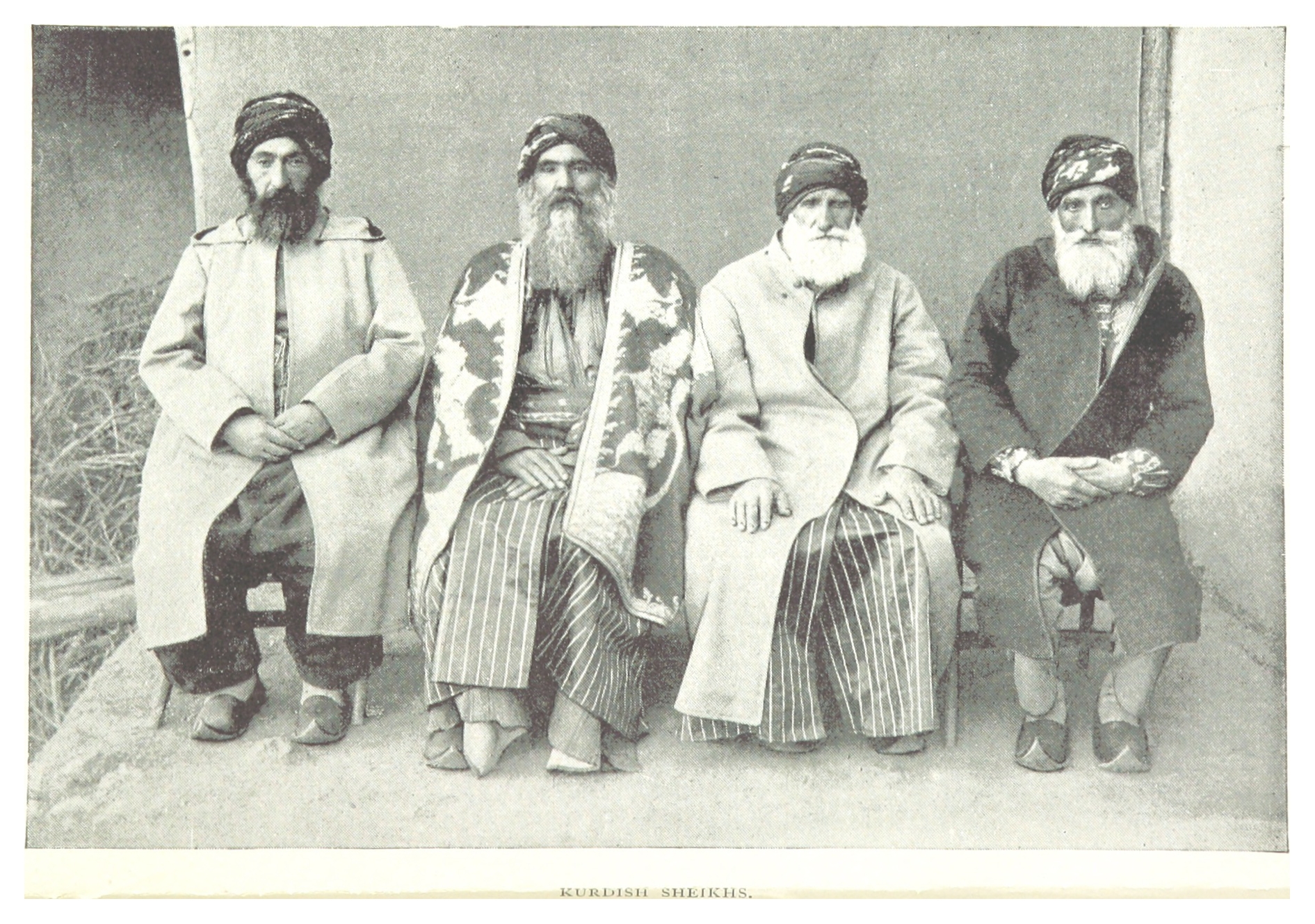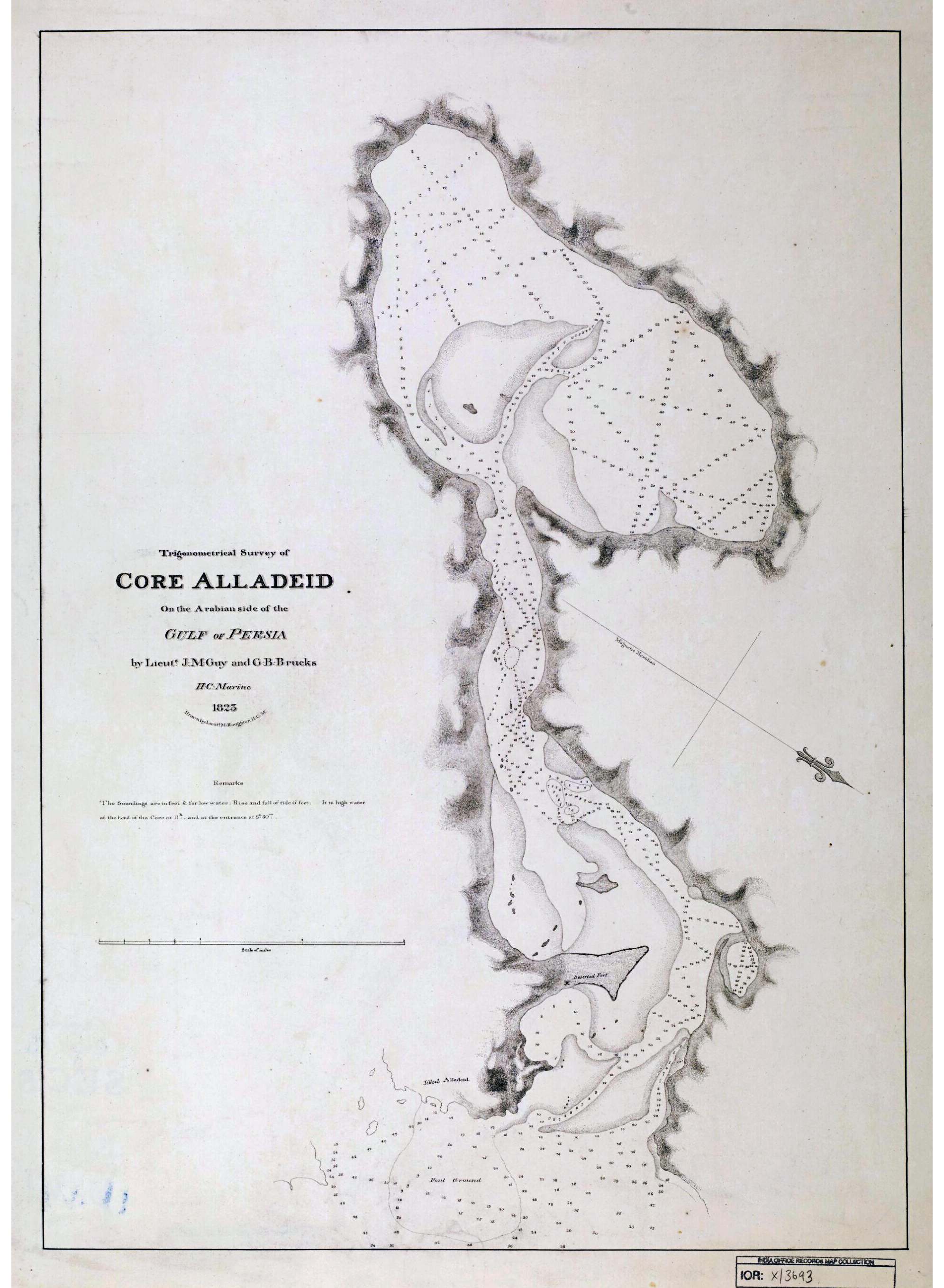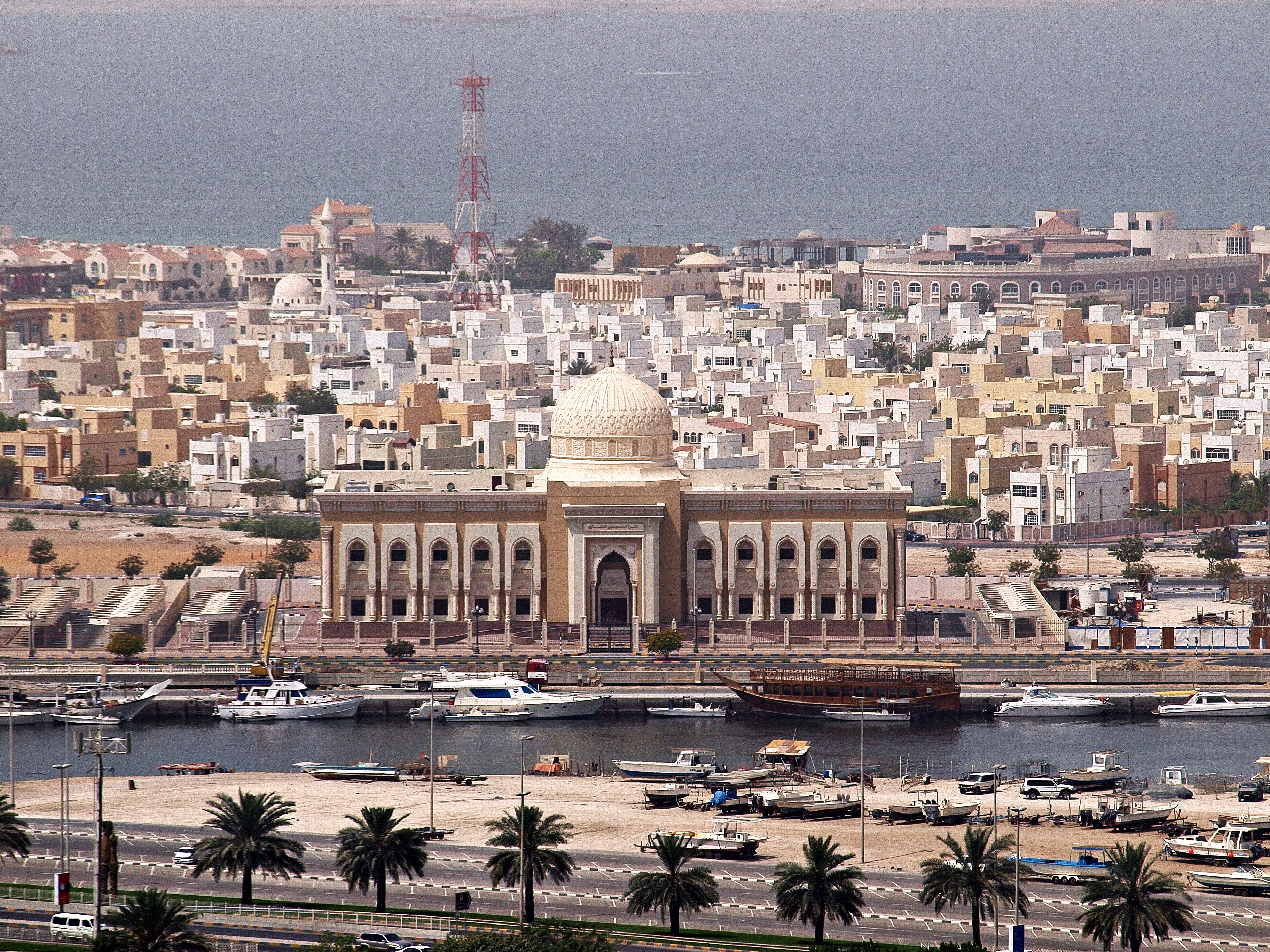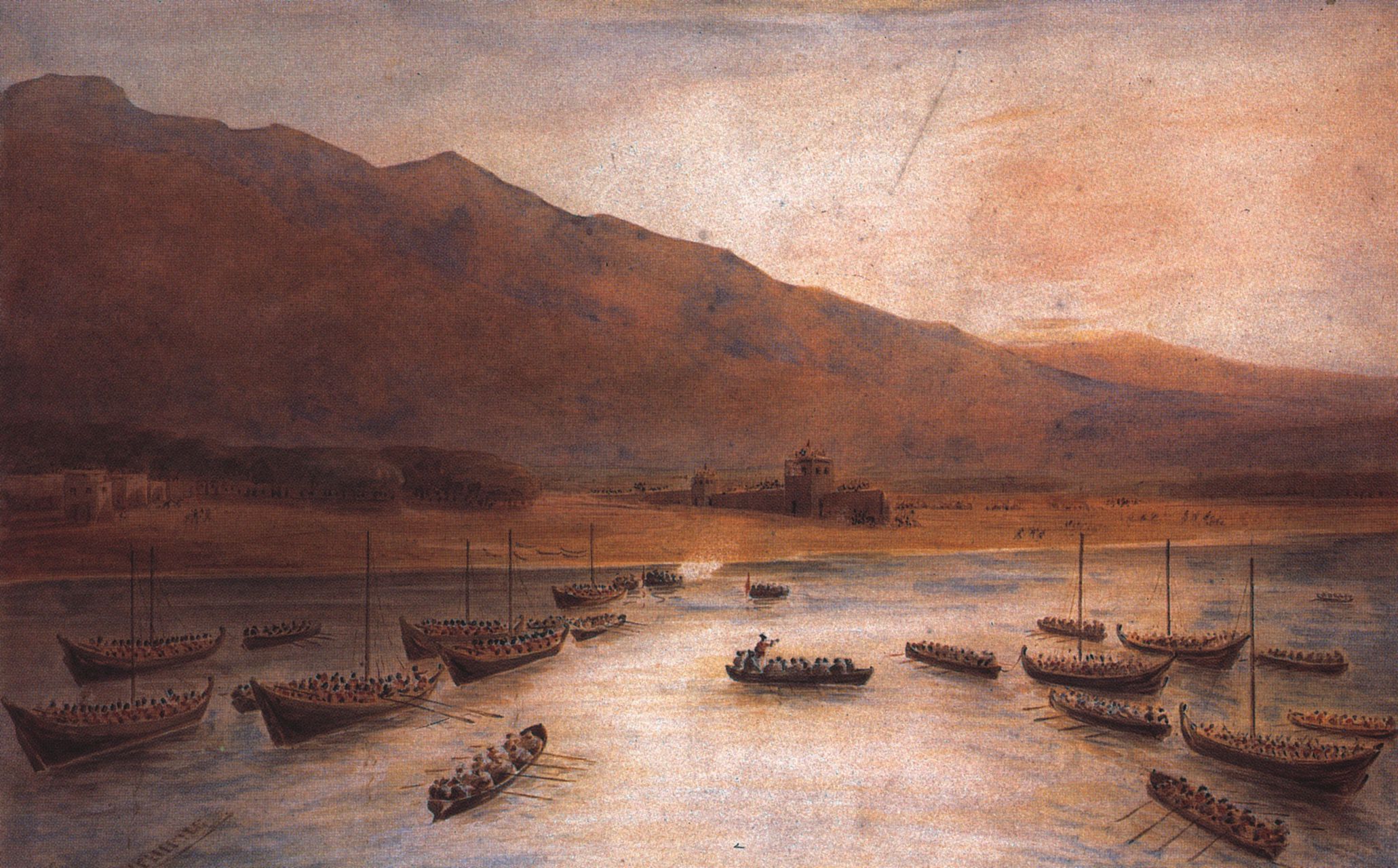|
Khalifa Bin Shakhbut Al Nahyan
Sheikh Khalifa bin Shakhbut Al Nahyan was the Ruler of Abu Dhabi, one of the Trucial States which today form the United Arab Emirates (UAE), from 1833 to 1845. His bloody accession led to the secession of the Al Bu Falasah and the establishment of the Maktoum dynasty in Dubai. Accession In April 1833, Khalifa took power alongside his brother and co-conspirator Sultan, deposing his other brother Tahnun and killing him in the process. Khalifa was the pre-eminent of the two and Sultan quickly took a subordinate position. Khalifa moved to declare Abu Dhabi in allegiance to the Wahhabi Amir. His rule was almost immediately threatened by a plot to remove him and install a cousin in his place, but he acted decisively and executed three of the ringleaders. A public outcry and the intervention of Sultan stopped him from delivering the same sentence to two prominent merchants and he settled for having one beaten, his property confiscated and exiled to Lingeh. Secession This action ... [...More Info...] [...Related Items...] OR: [Wikipedia] [Google] [Baidu] |
Al Nahyan
The House of Nahyan ( ar, آل نهيان, Āl Nohayān) are one of the six ruling families of the United Arab Emirates, and are based in the capital Abu Dhabi, United Arab Emirates. Al Nahyan is a branch of the House of Al Falahi (Āl Bū Falāḥ), a branch of the Bani Yas tribe, and are related to the House of Al Falasi from which the ruling family of Dubai, Al Maktoum, descends. The Bani Yas came to Abu Dhabi in the 18th century from Liwa Oasis. They have ruled Abu Dhabi since 1793, and previously ruled Liwa. Five of the rulers were overthrown and eight were killed in coups between 1793 and 1966; many were brothers. The Al Nayhan family control multiple sovereign wealth funds including the Abu Dhabi Investment Authority and Mubadala Investment Company that have an estimated $1 trillion worth of assets under management. Members Notable members of the Al Nahyan family include: Rulers of Abu Dhabi * 1761–1793: Sheikh Dhiyab bin Isa Al Nahyan * 1793–1816: Sheikh ... [...More Info...] [...Related Items...] OR: [Wikipedia] [Google] [Baidu] |
Maktoum Bin Butti Bin Suhail
Maktoum bin Butti (Arabic مكتوم بن بطي) was the joint founder and first ruler of Dubai, today one of the United Arab Emirates, alongside Obeid bin Said bin Rashid, with whom he led a migration of the Al Bu Falasah from Abu Dhabi, seceding from the Bani Yas. He was a signatory to the 1843 Maritime Truce, the precursor to the Perpetual Maritime Truce of 1853, as well as the 1847 treaty to abolish the slave trade. Migration Dubai is thought to have first been established as a fishing village on the Trucial Coast in the early 18th century. It was then a tributary to the Bani Yas tribe of Abu Dhabi. By 1820, the town was ruled on Sheikh Tahnun bin Shakhbut Al Nahyan's behalf by a regent, when the General Maritime Treaty of 1820 was signed between the sheikhs of the South Eastern Persian Gulf coast and the British. The regent, Saeed bin Saif bin Zaal, signed on behalf of his nephew, Sheikh Mohammed bin Hazza bin Zaal, who was at the time in his minority. Mohammed bin ... [...More Info...] [...Related Items...] OR: [Wikipedia] [Google] [Baidu] |
19th-century Arabs
The 19th (nineteenth) century began on 1 January 1801 ( MDCCCI), and ended on 31 December 1900 ( MCM). The 19th century was the ninth century of the 2nd millennium. The 19th century was characterized by vast social upheaval. Slavery was abolished in much of Europe and the Americas. The First Industrial Revolution, though it began in the late 18th century, expanding beyond its British homeland for the first time during this century, particularly remaking the economies and societies of the Low Countries, the Rhineland, Northern Italy, and the Northeastern United States. A few decades later, the Second Industrial Revolution led to ever more massive urbanization and much higher levels of productivity, profit, and prosperity, a pattern that continued into the 20th century. The Islamic gunpowder empires fell into decline and European imperialism brought much of South Asia, Southeast Asia, and almost all of Africa under colonial rule. It was also marked by the collapse of the l ... [...More Info...] [...Related Items...] OR: [Wikipedia] [Google] [Baidu] |
History Of The United Arab Emirates
The United Arab Emirates (the UAE or the Emirates) is a country in the eastern part of the Arabian Peninsula located on the southeastern coast of the Persian Gulf and the northwestern coast of the Gulf of Oman. The UAE consists of seven emirates and was founded on 2 December 1971 as a federation. Six of the seven emirates ( Abu Dhabi, Dubai, Sharjah, Ajman, Umm Al Quwain and Fujairah) combined on that date. The seventh, Ras al Khaimah, joined the federation on 10 February 1972. The seven sheikdoms were formerly known as the Trucial States, in reference to the treaty relations established with the British in the 19th century. Artifacts uncovered in the UAE show a history of human habitation, transmigration and trade spanning over 125,000 years. The area was previously home to the Magan people known to the Sumerians, who traded with both coastal towns and bronze miners and smelters from the interior. A rich history of trade with the Harappan culture of the Indus Valley is a ... [...More Info...] [...Related Items...] OR: [Wikipedia] [Google] [Baidu] |
19th-century Monarchs In The Middle East
The 19th (nineteenth) century began on 1 January 1801 ( MDCCCI), and ended on 31 December 1900 ( MCM). The 19th century was the ninth century of the 2nd millennium. The 19th century was characterized by vast social upheaval. Slavery was abolished in much of Europe and the Americas. The First Industrial Revolution, though it began in the late 18th century, expanding beyond its British homeland for the first time during this century, particularly remaking the economies and societies of the Low Countries, the Rhineland, Northern Italy, and the Northeastern United States. A few decades later, the Second Industrial Revolution led to ever more massive urbanization and much higher levels of productivity, profit, and prosperity, a pattern that continued into the 20th century. The Islamic gunpowder empires fell into decline and European imperialism brought much of South Asia, Southeast Asia, and almost all of Africa under colonial rule. It was also marked by the collapse of the la ... [...More Info...] [...Related Items...] OR: [Wikipedia] [Google] [Baidu] |
Sheikhs Of Abu Dhabi
Sheikh (pronounced or ; ar, شيخ ' , mostly pronounced , plural ' )—also transliterated sheekh, sheyikh, shaykh, shayk, shekh, shaik and Shaikh, shak—is an honorific title in the Arabic language. It commonly designates a chief of a tribe or a royal family member in Arabian countries, in some countries it is also given to those of great knowledge in religious affairs as a surname by a prestige religious leader from a chain of Sufi scholars. It is also commonly used to refer to a Muslim religious scholar. It is also used as an honorary title by people claiming to be descended from Hasan ibn Ali and Husayn ibn Ali both patrilineal and matrilineal who are grandsons of the Islamic prophet Muhammad. The term is literally translated to "Elder" (is also translated to "Lord/ Master" in a monarchical context). The word 'sheikh' is mentioned in the 23rd verse of Surah Al-Qasas in the Quran. Etymology and meaning The word in Arabic stems from a triliteral root connected wit ... [...More Info...] [...Related Items...] OR: [Wikipedia] [Google] [Baidu] |
Bedouin
The Bedouin, Beduin, or Bedu (; , singular ) are nomadic Arabs, Arab tribes who have historically inhabited the desert regions in the Arabian Peninsula, North Africa, the Levant, and Mesopotamia. The Bedouin originated in the Syrian Desert and Arabian Desert but spread across the rest of the Arab world in Western Asia, West Asia and North Africa after the spread of Islam. The English word ''bedouin'' comes from the Arabic ''badawī'', which means "desert dweller", and is traditionally contrasted with ''ḥāḍir'', the term for Sedentism, sedentary people. Bedouin territory stretches from the vast deserts of North Africa to the rocky sands of the Middle East. They are traditionally divided into tribes, or clans (known in Arabic as ''ʿašāʾir''; or ''qabāʾil'' ), and historically share a common culture of herding camels and goats. The vast majority of Bedouins adhere to Islam, although there are some fewer numbers of Arab Christians, Christian Bedouins present in the Fe ... [...More Info...] [...Related Items...] OR: [Wikipedia] [Google] [Baidu] |
British Raj
The British Raj (; from Hindi language, Hindi ''rāj'': kingdom, realm, state, or empire) was the rule of the British The Crown, Crown on the Indian subcontinent; * * it is also called Crown rule in India, * * * * or Direct rule in India, * Quote: "Mill, who was himself employed by the British East India company from the age of seventeen until the British government assumed direct rule over India in 1858." * * and lasted from 1858 to 1947. * * The region under British control was commonly called India in contemporaneous usage and included areas directly administered by the United Kingdom of Great Britain and Ireland, United Kingdom, which were collectively called Presidencies and provinces of British India, British India, and areas ruled by indigenous rulers, but under British British paramountcy, paramountcy, called the princely states. The region was sometimes called the Indian Empire, though not officially. As ''India'', it was a founding member of the League of Nations, a ... [...More Info...] [...Related Items...] OR: [Wikipedia] [Google] [Baidu] |
Khawr Al Udayd
Khawr al Udayd, ( ar, خور العديد; also spelled Khor al Adaid and Khor al-‘Udeid) is a settlement and inlet of the Persian Gulf located in Al Wakrah Municipality in southeast Qatar, on the border with Saudi Arabia. It is known to local English speakers as the "Inland Sea". In the past it accommodated a small town and served as the center of a long-running territorial dispute between Sheikh Jassim bin Mohammed Al Thani and Sheikh Zayed bin Khalifa Al Nahyan. At the present, it is a major tourist destination for Qatar. The area was declared a nature reserve in 2007. Qatar has pitched Khawr al Udayd's potential inclusion as a World Heritage Site to UNESCO but it currently only occupies the Tentative List. History Settlement and subsequent conflicts The area of Khawr al Udayd had been a point of friction between Qatar and what is now Saudi Arabia and the United Arab Emirates (UAE). Khawr al Udayd had served as a refuge for pirates from the Emirate of Abu Dhabi (now part ... [...More Info...] [...Related Items...] OR: [Wikipedia] [Google] [Baidu] |
Emirate Of Sharjah
The Emirate of Sharjah (; ar, إِمَارَة ٱلشَّارِقَة ') is one of the emirates of the United Arab Emirates, which covers and has a population of over 1,400,000 (2015). It comprises the capital city of Sharjah, after which it is named, and other minor towns and exclaves such as Kalba', Al Dhaid, Dibba Al-Hisn and Khor Fakkan. The emirate is an absolute monarchy. It has been ruled by Sultan bin Muhammad Al-Qasimi since 1972, except for a six-day period during an attempted coup d'etat by his brother, Sheikh Abdulaziz bin Mohammed Al-Qasimi. History Human settlement in the area covered by the emirate has existed for over 120,000 years, with significant finds made of early axes and stone tools as well as Copper and Iron Age implements in Al Dhaid, Al Thuqeibah, Mileiha, Tell Abraq, Muwailah, Al Madam and Jebel Faya. Archaeological finds in the Mleiha area point to human habitation consistent with the spread of humanity from Africa to the wider world, ... [...More Info...] [...Related Items...] OR: [Wikipedia] [Google] [Baidu] |
Sultan Bin Saqr Al Qasimi
Sheikh Sultan bin Saqr Al Qasimi (1781–1866) was the Sheikh of the Qawasim and ruler variously of the towns of Sharjah and Ras Al Khaimah, Jazirah Al Hamra and Rams, all Trucial States in their time and now part of the United Arab Emirates. Briefly a dependent of the first Saudi Kingdom, his rule over Ras Al Khaimah ran from 1803–1809, when he was deposed by order of the Saudi Amir and restored in 1820, going on to rule until his death in 1866 at the age of 85. He was Ruler of Sharjah from 1814–1866, with a brief disruption to that rule in 1840 by his elder son Saqr. He was a signatory to various treaties with the British, starting with the General Maritime Treaty of 1820 and culminating in the Perpetual Maritime Truce of 1853. Rule A characteristic of Sultan's rule is that he placed relatives as ''walis'' or headmen of the emirates under his rule and so Ras Al Khaimah was effectively ruled by Mohammed bin Saqr, Sultan's brother, from 1823 until his death in 1845, while ... [...More Info...] [...Related Items...] OR: [Wikipedia] [Google] [Baidu] |
Dubai Museum
Dubai Museum ( ar, متحف دبي) is the main museum in Dubai, United Arab Emirates. It is located in the Al Fahidi Fort ( ar, حصن الفهيدي), built in 1787 and is the oldest existing building in Dubai. The museum was opened by the Ruler of Dubai in 1971, with the aim of presenting the traditional way of life in the Emirate of Dubai. When entering, one can see the fort constructed and the various displays that go along with it. From the fort, there is a path to the galleries, which display the general culture of the land, especially in the 1800s. It includes local antiques as well as artifacts from African and Asian countries that traded with Dubai. It also includes several dioramas showing life in the emirate before the advent of oil, in addition to artifacts from recent discoveries as old as 3000 BC. In 2007, Dubai Museum received 1,800 visitors daily, with a yearly total of 611,840. In March 2008, the museum had 80,000 visitors. The most popular times are from August ... [...More Info...] [...Related Items...] OR: [Wikipedia] [Google] [Baidu] |
_(cropped).jpg)

.jpg)






